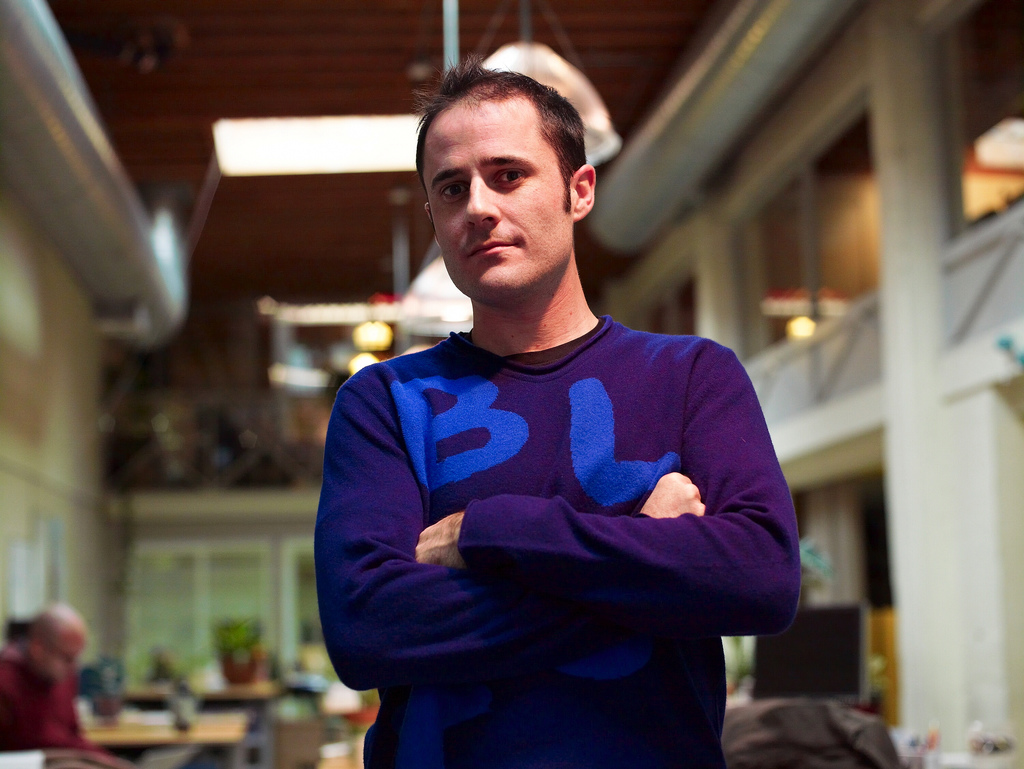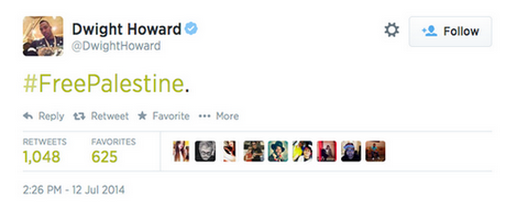
Jon Schubin
Shared posts
Choco Taco Cappuccinos Are Real, Possibly Spectacular
Good morning.
Oh, man: Over at Bedford + Bowery, our colleagues dropped an unbelievable photo of a convenience-store coffee machine that doles out Choco Taco-flavored coffee. At this early hour, while Grub is still sipping on our own morning coffee, the shot, from a store in Lake Placid, New York, strikes a particular chord — and it causes us to ask ourselves three very important questions:
1. What would a Choco Taco Cappuccino actually taste like? Choco Tacos just taste like chocolate sauce and vanilla ice-cream in a waffle-cone shell, so we'd guess "mocha."
2. Why didn't our friends at B+B actually order one? We can't say for sure, but we actually don't begrudge them for being fearful of such a creation at an early hour. 7 a.m. is no time for culinary shenanigans.
3. Are we about to enter a full-on Choco Taco renaissance? Maybe. Empellón's Alex Stupak whipped some up a while back, after people asked for them on social media. B+B offered its particular photo after noticing that a vendor at the Hester Street Fair's Ice Cream Social will offer a version of the treat. And people obviously love these things. Can a Smorgasburg stand be far behind?
Just as we were ready to write this off as a one-time-only missed opportunity, we came across this mention from CNN's Kat Kinsman, who has apparently also seen these sweet babies in the wild. She, in turn, points the world to some (dated-looking) sales information for the machine in question. And now, even though it is six months away, Grub Street knows exactly what we will be asking for this Christmas.
The Choco Taco Cappuccino. It Exists. [Bedford + Bowery]
Read more posts by Alan Sytsma
Filed Under: inventions, choco taco, ice cream
“Solidarity With Israel”
Jon SchubinI think Birthright is pretty troubling, since it presents such a biased narrative on the State of Israel, the legitimacy of the settlements, and the perpetuates the idea of the Israeli as an 'encircled' people. Considering the heavily militarized curriculum, frankly it's surprising more people who go don't join the IMF.

Photo by Quazie/Flickr Creative Commons
In 2012, Los Angeles native Max Steinberg traveled to Israel for the first time, on a 10-day trip sponsored by Birthright Israel. A few months later, he joined the Israel Defense Forces. On Sunday, he died fighting in Gaza, leaving behind his parents, who will now take their first trip to Israel to bury their 24-year-old son.
There are many people to blame for Steinberg’s death. There is the Hamas fighter behind the weapon that actually killed him. There are the leaders, on both sides, who put him in Gaza, and the leaders behind all of the wars between Israel and the Palestinians. I can trace it back to 1948, or 1917, or whatever date suits you and still never find all the parties who are responsible. But I have no doubt in my mind that along with all of them, Birthright shares some measure of the blame.
Birthright was founded by Jewish philanthropists Charles Bronfman and Michael Steinhardt in 1999 “to change the course of Jewish history and ensure the continuity of the Jewish people by strengthening Jewish identity, Jewish communities, and solidarity with Israel” by sending young Jews on all-expense-paid trips there. The organization has been extremely successful: Birthright reports that more than 400,000 young Jewish men and women have visited the Holy Land on its dime, and research out of Brandeis University confirms that the trips are having the desired effect, producing a more-engaged Jewish diaspora with stronger ties to Israel. Though most trip alumni do not join the IDF (Birthright’s spokeswoman told me they don’t keep track), to do so seems like the ultimate fulfillment of Birthright’s mission—the ultimate expression of a Jew’s solidarity with Israel is to take up arms to defend it.
A few years ago, Kiera Feldman wrote about Birthright for the Nation and described “the mifgash”—a multiday portion of the trip during which Israeli soldiers join the group as a way to create a bond between young diaspora Jews and their IDF peers:
Soldiers meet Birthrighters in full uniform, spend the remainder of the mifgash in civilian clothing and then dress back in uniform for the encounter’s final day: the Holocaust Museum followed by a visit to the graves of Theodor Herzl and fallen soldiers. Lynn Schusterman, a Birthright funder and board member, told me the bonds formed during the mifgash help participants gain an understanding of soldiers’ “moral and ethical standards.” After the 2006 Lebanon war, Brandeis researchers found that Birthright alumni were more likely than other young American Jews to view Israel’s military conduct as justified.
What else happens on those 10-day trips? There is a lot of hooking up and plenty of, as Feldman writes, “reinforcing the Zionist claim to the land” (Feldman’s tour guide identified everything they saw out of the bus window as “in the Bible,” and her group was given maps that identified the West Bank as “Judea and Samaria”). And, “at some point during their all-expenses-paid ten-day trip to a land where, as they are constantly reminded, every mountain and valley is inscribed with 5,000 years of their people’s history,” there is “the moment”— the moment when participants realize just how important Israel is to them, to their fundamental identity, and how important they are to Israel.
It turns out that it’s not that hard to persuade young people to see the world a certain way.
According to Steinberg’s parents, that is exactly what happened to Max. His mother told the Washington Post that, initially, he didn’t want to go on the Birthright trip, but once he did, it changed him. It was on his group’s visit to Israel’s national cemetery at Mount Herzl that Steinberg saw the grave of an American “lone soldier” who died fighting for Israel and “decided that Israel was where he wanted to be.” He joined the IDF, his father said, because he saw it as an obligation were he to stay in Israel.
Birthright says that aliyah—the immigration of diaspora Jews to Israel—is not one of its goals, but like Steinberg, many participants come away with the feeling that Israel is where they belong. Birthright estimates that 20,000–30,000 of its participants have acted on that feeling by moving to Israel. I have known many young American Jews who have made the same decision—who at 18 decided that they belonged in Israel and, though they’d never considered joining the American military, moved across the ocean to join the IDF right after high school. People say Birthright is “just like camp,” and it sure sounds like a very condensed version of the Jewish camp I attended as a kid, whose purpose was, at the very least, to foster a connection to Israel in young Jews—and at best, to get us to move to the country and fight for it. My camp, filled with the children of liberal American Jews, did this by presenting a very simplistic picture of the political situation in Israel and the threat to Jews worldwide, all within the context of helping to fix the world while having the time of your life. Birthright does a form of the same.
On Tuesday, Birthright issued a statement from its CEO, Gidi Mark. “We are deeply saddened to inform you of the tragic loss of one our Taglit Birthright Israel alumni Max Steinberg,” Mark wrote. “His life—a life filled with promise cut short far too soon—will live in our hearts forever as a reminder of the sacrifices he and so many before him have made to keep Israel safe.”
What makes an American kid with shaky Hebrew and no ties to the state of Israel suddenly decide he is ready to make this sacrifice? Maybe Max was especially lost, or especially susceptible, or maybe he was just looking to do some good and became convinced by his Birthright experience that putting on an IDF uniform and grabbing a gun was the way to do it. That serving and protecting the Jewish people was the moral thing to do, and that the best way to accomplish it was to go fight for the Jewish state. It turns out that it’s not that hard to persuade young people to see the world a certain way and that Birthright is very good at doing it. You spend hundreds of millions of dollars to convince young Jews that they are deeply connected to a country that desperately needs their support? This is what you get.
Zappos just abolished bosses. Inside tech's latest management craze.
Jon SchubinThis sounds like... not a good idea.
The latest management trend to sweep Silicon Valley requires CEOs to formally relinquish their authority and grants special protection for every employee to experiment with ideas. It's called holacracy and big name tech leaders have jumped on the bandwagon.
Twitter co-founder Evan Williams adopted it for his new blogging platform startup, Medium. The management movement started making headlines when Zappos CEO Tony Hsieh announced that he will transition his entire Las Vegas company — with a billion dollars of revenue and 1500 workers — to holacracy by the end of 2014.
Holacracy advocates argue that centralization of power suffocates innovation
Can this unconventional management scheme actually work? To explore whether Zappos's plan was crazy or brilliant, I recently traveled to the company’s Las Vegas headquarters. I spent a week with with Hsieh, his executive team, and Zappos departments that are currently transitioning to the new system. In daytime interviews and drinks after works, I got a first-hand look at both the anxiety and hope that an overhaul inspires in an established tech giant.
The experience convinced me that something like holacracy is the future of management. For years, Silicon Valley's famously collaborative management style has seemed like a haphazard extension of the anti-authoritarian, novelty-seeking personality of first-time tech CEOs. It was only a matter of time before someone came up with a system that codifies these values and practices. Read on to learn how holacracy works and why it could transform how America does business.
What is holacracy?
Holacracy is management by committee with an emphasis on experimentation. The CEO formally relinquishes authority to a constitution and re-organizes everyone into decentralized teams that choose their own roles roles and goals.
Why would any boss willingly do that?
Advocates for holacracy argue that centralization of power suffocates innovation. "Especially in today’s world, where everything is changing much faster than it was 10 years ago, I think flexibility and adaptability is what’s actually going to be the competitive advantage. And holacracy allows for faster flexibility and adaptability," Hsieh told me as we rode to a startup party in a warehouse on the outskirts of Downtown Vegas.

Evan Williams, co-founder of Blogger, Twitter, and Medium (Joi Ito)
Holacracy is part of a broader trend towards managerless decision making, according to Texas A&M management professor Stephen Courtright. "Based on longitudinal surveys, less than 20% of Fortune 1,000 companies had team-based structures in 1980," he told me in an email, "compared with 50% in 1990 and 80% in 2000."
Especially in chaotic industries, it pays for the CEO to delegate as much authority as possible in order to encourage experimentation.
"It's a management methodology and set of practices that is all about adaptation," Medium’s Evan Williams told me. "It's a great system, it's a great way to run meetings; you tap into the intelligent perspective of everybody in the room and it's more efficient."
But, the boss is still in charge, right?
Kind of. A CEO could unilaterally decide who leads each team, but it would undermine the trust of the company and the entire committee structure built on top of it. The constitution in holacracy works like the constitution in some fledgling democracies. The president could declare martial law and rule by fiat, but things work better for everyone if he abides by self-imposed limitations.
Authority is doled out in occasional 'governance' meetings
So that's the only unilateral decision he's allowed to make: dictatorship or self-governance.
How is holacracy different than normal team-based management?
In a traditional business, most workers take on roles that are way beyond their job description: they organize social events, help with hiring, or design a new marketing strategy. Holacracy tries to make all these miscellaneous roles explicit, creating teams ("circles") around every possible thing a worker could do for a company.
"What happens in a traditional organizational hierarchy structure is that most people play a lot of different roles but those roles aren’t defined," explained Zappos executive Fred Mossler. "Holacracy forces you to define the work that you do and it forces you to define your roles and accountabilities."
In Zappos's holacracy, a typical call center worker could hold additional official duties in planning social events, corporate social responsibility, designing the the lunch menu, or on an advertising campaign.
What does this have to do with being more innovative?
No one at Zappos, not even the CEO, can shoot down an employee's idea unless it will obviously hurt the company. In holacracy's legalistic terms, "a valid objection" must "arise from known data, or, if predictive, there would not be an opportunity to adapt before significant harm could be done".
Employees can be both a superior and subordinate to the exact same person
In other words, if someone has been assigned a role, they can fulfill it however they like unless their plan involves something that is already known to end in disaster.
The justification is that traditional businesses tend to litigate novel idea into oblivion — through the well-intentioned road of improvement. "If you just have a better idea, that’s not a valid objection," explained human relations associate Kelly Wolske, over lunch with a group of her colleagues that had been early Holacracy adopters. "We don’t want this governing by consensus and governing by committee. If it’s safe to try, if it’s not going to move us backwards or cause us harm, okay then."
How do workers decide who's in charge?
Authority is doled out in occasional "governance" meetings, where roles and their responsibilities are outlined. The "leadlink" (a.k.a manager) for a circle starts out by appointing someone to facilitate the conversation, and everyone, in clockwise sequence, is allowed to give an opinion, become a candidate for a role, and discuss what everyone's goals should be.
You can watch a simulation of a governance meeting below. If bureaucratic meetings are your idea of fun, this video is like Transformer's on crack. For the rest of us, it's like Ambient, but deadlier.
This still sounds like hierarchy.

In function, committees ("circles") are often identical to the layers of hierarchy holacracy claims to replace. A general "super circle" is composed of the major business divisions, like marketing and human relations, with each department vice president appointed as the manager of a sub-circle committee, neatly delineating a chain of authority down to more detailed circles.
In this way, holacracy is a traditional hierarchy, with one very important exception: employees can be both a superior and subordinate to the exact same person.

Delaney and Bailen are part of a pool of employees.

Based on skills, these employees are in circles with different goals. Each circle can have subcircles.

Delaney is leader of one circle. Bailen is leader of a circle within that. If Bailen removes Delaney from the subcircle, Delaney is still his leader in the larger group.
Here is how Zappos's human relations ("people ops") director, Hollie Delaney, explained a situation where she is both superior and subordinate to the same person:
Holacracy would rather govern through forgiveness than permission
People Ops is our super circle. I am the Lead Link of People Ops. People is a circle below People Ops. Michael Bailen is the Lead Link of People. Then we have Employee Relations as a sub circle of People. I am the Lead Link of Employee Relations. I also hold roles in People and Employee Relations. So in this example, I am Mike's boss in some cases, but Mike is my boss in others.
Bailen, as the leadlink of employee relations, could fire Delaney from her position in the circle, yet remain her subordinate in people ops.
If holacracy is about democratic decisions, why not vote to approve experiments?
Holacracy is not democracy. "Pure democracy is one of the least efficient ways of governing," human relations associate Kelly Wolske told me. "The fact remains that consensus building is a waste of time because If we’re gonna vote, what are we gonna do? We’re going to have to say that it has to be 12 out of 20 and are we going to expect a quorum?"
Holacracy would rather govern through forgiveness than permission, and lets people act without the need to lobby colleagues for support. But, if someone screws up, then it requires hauling everyone back to a meeting.
Holacracy is closer to what political scientists call epistemic democracy, where decisions are based more on persuasion and expertise than majority rule. There's lots (and lots) of discussions in holacracy, but elected individuals are given permission to act how they please until they screw up.
Has holacracy produced any breakthrough successes for Zappos?
It’s too soon to say. Hsieh introduced me to one bubbly 20-something employee who we met for a late-night beer at a local bar. She was hired to manage Zappos's popular "Prom" page of glistening high school models dressed in fairy tale gowns. It turns out this employee was also a closet computer geek who retrofitted circuit boards to video game consoles in her spare time.
Holacracy is designed for risk-happy entrepreneurs
"Fashion is my number one thing, but technology is what I do on my weekends ... I have pages and pages of things that I think should be better, but I was told that wasn't my job", she told me. When holacracy eventually comes to her department, Hsieh believes that unexpected talents like hers will ultimately prove more valuable than pre-defined responsibilities.
Holacracy is designed for risk-happy entrepreneurs. "Humans are terrible at planning," Twitter co-founder Evan Williams explained to me. "We’re terrible at predicting, and if you set up a system in which you have to follow the plan, and your predictions have to be right, you’re much more likely to fail than if you set up a system where you only really plan a little bit at a time and you predict, but are open to being wrong and in fact looking for where you’re wrong,"
Williams believes a lot of failed dotcom startups in the 1990s suffered from overconfidence and excessive planning. "I think a lot of their fatal errors were assuming they had it all figured out," he says. When the bubble popped, they learned — too late — that they were wrong.
Holacracy assumes the best of each employee. Wolske explained to me that holacracy assumes that people "are not jerks, they’re not stupid and they’re not evil." So, the whole company can "trust that it is safe for them to energize those roles in the best way they see fit until we get data that says otherwise." In other words, if you think employees need constant oversight, holacracy is your own personal bureaucratic nightmare.
How long does it take to transition to holacracy?
I surveyed a few departments to see how much time the transition takes away from them doing their actual jobs. In a small, windowless meeting room tucked away in the fourth floor of Zappos HQ, engineering manager Ryan Quinn told me that it took his understaffed IT group "five days total time, plus watching videos" for each employee.
After hearing about their meeting-happy fate, a young women breathed 'Yikes' behind me
Though the team barely has any flexible time, Quinn's hopeful that the added transparency of Holacracy circles will finally reveal just how much extra work his team does.
Larger teams can take much longer. Transitioning a 100-plus person department can take "a good six to nine months to get everyone practicing in a circle," says call center manager, Moria Daily, after a big town-hall meeting with a captive audience of Zappos's largest department.
This still sounds awkward and disagreeable.
For many workers, yes, it is. "When you first go into a meeting, it's going to feel weird," said call center director Rob Siefger to a large crowd gathered to learn about holacracy. After hearing about their meeting-happy fate, a young women breathed "Yikes" behind me.
Holacracy isn't for everyone and some find the transition very awkward. The true test of Zappos's experiment will be revealed when holacracy is expanded beyond the enthusiastic early adopters.
How do you fire people?
Hsieh says he’s confident that the more control he gives up, the better off his baby will be
You have to royally screw up in one of your positions, or underperform in many of them to be fired. "If I’m not energizing anything really well," Delaney explained "then, yes, that would be where we would discuss discipline and termination."
How does everyone keep track of all this?

There's software. Holacratic organizations streamline the committee madness through GlassFrog software, an online database of employee roles and a dynamic checklist for sequencing meetings.
What's next for Zappos?
By the end of the year, Zappos will become the largest company to have adopted holacracy. The big unknown is how people will be paid. Right now, they're given a salary based on their old roles, but once the company is organized into committees it will need a way to compensate employees for every role they take.
However Zappos sorts out these details, Hsieh says he’s confident that the more control he gives up, the better off his baby will be: "How do we restructure Zappos so it functions more like a city and less like a bureaucratic organization as we add more employees? By distributing more authority, more control, it may seem counter-intuitive, but you actually increase the productivity and innovation of the organization."
"I'm hoping that [holacracy] will require me to make fewer decisions, because that doesn't scale, if every decision has to come from me," Hsieh says. "The mayor of a city doesn't tell its citizens what to do."
Why I've never understood the appeal of a posh watch
Jon SchubinAgree with this article until he gets to the part where you should "only spend" £1500 for a watch. Why have a watch at all? I say no to watches.

I’m sure I’m not alone in occasionally playing games of “What-if?” with my career. And I’m equally sure that I’m not alone in one of my regular what-ifs being, “What if I’d become a banker?”
Sure, it would be hard work and long hours. But so is running your own company. In fact, for me, working in finance would have meant more money and less stress and personal risk. At the moment, I’m buying a house. Had I turned right out of university and walked into JP Morgan, I wouldn’t be faffing around with a mortgage, I’d be buying the place outright, probably as part of the portfolio I was building up to give me something to do when I retire next year.
I was musing along these lines when a watch supplement fell out of the magazine I was reading. I remembered something I’ve been told so often that it must be true: when City boys get their first big bonus, they go out and buy a dumb fast car or an expensive watch. And then I thought of all those braying, pink-shirted Canary Wharf types, with their gleaming doughnut-sized timepieces, and I realised that I would never have cut it as a banker. You see, I’m just not impressed enough by £20,000 watches.
There is something deeply weird and also rather offensive about expensive watches. The flashy car, I understand. A £50,000 Jaguar F Type is a much better car than a Ford Mondeo by pretty much any yardstick except fuel consumption. The high price tag is reflected in the quality of its design and build. It is entirely different driving experience.
But an expensive watch is not necessarily a better watch. Let’s take an Omega Seamaster. If you want a nice watch, I would argue that this is all the watch you need. It ticks all the important watch boxes and it’s a great, classic timepiece. You can pick them up quite cheaply second hand and I’ve bought several and they’re fantastic.
Even new, they start at around the £1500 mark. Hardly cheap, but chump change compared to what you can spend. Up in the watch stratosphere, where the chronological 0.001pc live, you can easily part with over £100,000 for a Swiss timepiece. As I write this, I am reading an online article entitled “10 Watches that Cost More than a Ferrari” and thinking that maybe al-Qaeda do have a point about western civilisation.
As I’ve said, I’m not averse to expensive watches. The Seamaster is an expensive watch. It’s the watch my dad wore (he bought his second hand) when I was a child and was a cherished possession of his. It will outlast him. I love this idea – a beautiful, well-made thing being passed down from father to son. But I do not love the idea of a watch that costs more than a teacher or a nurse earns in a year. This feels like a modern take on the last days of Versailles with an added twist of rich chav.
Also, where does all the money go? I suppose some of it goes on the gold, other precious metals and diamonds that often encrust these watches like blinging barnacles. But £30,000 buys you a lot of gold and even quite a few diamonds. The mechanism? How much more mechanism does £100,000 buy? The inescapable conclusion is that all you are really buying is a name, perceived cachet and entry into those weird circles where people have conversations about £60k watches that don’t end with punchlines involving the C-word.
High end watches are a kind of 'Veblen good' – a product that people only want because it is expensive. It’s no coincidence that the economist these goods are named after, Thorstein Veblen, described the concepts of conspicuous consumption and status-seeking in the late 19th century, the last time inequality was as brutal as it is now. Although at least the Robber Barons had the decency to build some nice libraries instead of boring each other stupid about their Panerais.
But even if you’re OK with wearing something that is about as close as middle-class professionals get to 50 Cent, it’s still really stupid. You’re a bloke, right. You probably knock your wife or girlfriend when she buys an overpriced, branded pair of shoes or handbag which might cost £500. So, how moronic is it to buy a watch that costs 20 or even 200 times as much? Especially when it makes you look like you’ve joined the Russian Mafia by way of Jersey Shore.
Besides, as we all know, if you want a truly accurate watch, you go to down to your local petrol station and spend £10 on a Casio. For all the treasure and labour expended on expensive watches, they do not keep terribly good time. A simple quartz watch will always win. So, to use the car analogy, it would be like buying a £50,000 Jag only to discover that it was actually slower than a Mondeo. So perhaps the Jag isn’t a very good comparison. Maybe what you’re really wearing on your wrist is more akin to the one of those stretch Humvees you see doing hen nights in Blackpool.
In fact, the more you rack your brains, the harder it is to find a meaningful analogy for something that makes so little sense. You find yourself wondering: if you were put to the test, could you could really spend more than the average price of a UK house on a watch? I don’t think I could. I think I’d get cold feet. I’d chicken out and buy a nice Seamaster and write a £250,000 cheque to MenCap if I had that kind of money to burn. As for the very pinnacle of this weird world – the watches that cost over a million pounds – they have me thinking that, all things considered, the K-Foundation’s act of burning a million quid was quite a cool thing to do.
Perhaps this is the key. There is no good reason to spend that kind of money on a watch. In fact, watches that cost tens of thousands of pounds are just status symbols for people who don’t have the imagination or balls to set fire to £1m. They belong in the same category as the $1000 “I am rich” iPhone app that did nothing other than tell people you could afford to spend $1000 on nothing.
They’re part of our peculiarly awful modern decadence, This isn’t the decadence of fin de siecle Paris or 1920s Berlin, which produced some great art amongst all the drinking and decay. Rather it’s the decadence of early 21st century Dubai. A society so mindless and cash-rich at the top that all it can produce is trophies for consumerist barbarians.
However, distasteful though all this, I’m still a businessman. I’m constantly looking for new opportunities and I really don’t think we’ve reached “peak watch” yet. So, I’m thinking of setting up a Kickstarter to produce a new timepiece. It will be called, naturally, the Proud Chronograph (see: ridiculous and pompous but entirely plausible) and it will be a watch to end all watches. Watch historians of the future will hail me as the man whose visionary genius ended the watch arms race.
Of course the Proud Chronograph will have many of the qualities one looks for in a luxury watch. It will be the size of a life-preserver and made of some silly metal that in is inferior to steel in every sense except its price tag; it will weigh in a 14lbs and it will have numerous, pointless dials and be studded with diamonds; it will be perpetual and self winding, using the energy from a well-known back-and-forth wrist motion. It will cost over a million pounds and you will need to be nominated and seconded by existing Proud Chronograph owners before you are allowed to apply for “the privilege of custodianship” or some similar dreadful, gimmicky twaddle.
But in the middle of the face, amid all the high-end Swiss wankery will be the USP, the key watch differentiator. This will be an LCD panel – and it will display your bank balance.
Exodus: Gods and Kings might be the campy Bible story you didn't know you needed

The biggest problem for movie adaptations of historical or biblical epics has always been tone. Striking the balance between seriousness, camp, and self-awareness of said seriousness and camp hasn't often been done well, and several movies have failed, some (e.g. Alexander) gloriously.
The winning formula of late seems to be the 300 franchise — an approach where the homoerotic thighlight reels seem to be in on the joke.
On Wednesday, we got our first look at Ridley Scott's Exodus: Gods and Kings. Like its predecessors, it seems to be allergic to modesty:
Moses (Christian Bale) and Ramses II (Joel Edgerton) sport Amy Winehouse amounts of eyeliner, and there's enough glam and glitter here to give Behind the Candelabra a run for its money. Also, Scott seems to be a big believer in fans and wind machines (a trick popularized by many drag queens and Beyonce):
Exhibit A)

Exhibit B)

There are also a lot of campy side-eyes and stares in the short trailer, like this one from Sigourney Weaver:

And this one from Bale:

Exodus promises to be epic. It's unclear at this point if it will be in the way Scott intended.
Full Moon Fest 2014
Jon SchubinShut it down. Full moon party is intolerable in Thailand. There is no way it should come here.
If you’ve studied your international party guide, you’d know that the Full Moon Festival is an all-night beach party that takes place on the island of Ko Pha Ngan in Thailand, the day before every Full Moon. Well this year you don’t have to go nearly as far to get a taste of what everyone’s talking about.
NYC’s version of the Full Moon Festival takes place on The Beach at Governor’s Island, Friday, August 8th. Featuring two stages, 13 artists (and more TBD!) and a number of fantastic food vendors, this party is sure to be second best to the real thing (except you’re still going to have to pay NYC prices for a massage the next day. My friend is in Thailand right now and said they are like, $5 an hour. YEAH, I KNOW – $5 FOR AN HOUR. But I digress . . . )
Now, Let’s talk lineup:
Main Stage: EMEFE // Wave Racer // Le Youth // Son Lux // Aston Shuffle // Delorean
Courtyard: JDH & Dave P// Chela // Penguin Prison // The Knocks // Vikas Sapra
Food Vendors
Feel Food
Tacombi
Spur Tree
An Choi
Mofongo
Kosofresh
Carnaval
It’s a full moon! Let’s get weird, y’all. Tickets are AVAILABLE HERE and start at just $30. That’s almost Thailand prices. Almost.
Check out tunes from some of my top lineup picks, below:
Jon Henrik - Daniels Joik.
Jon SchubinWhat a great joik! New favorite Colombian.
How to Become a Playback Singer in Mumbai
Jon SchubinThis advice is not very helpful. I expect more Wikihow.
Steps
- Know if you can really sing well to become a playback singer.
- If you cannot decide if you can sing well, ask anyone of your very close friends to know their true opinion.
- If you are not so good at it, then try working harder and keep practicing. But, if you can, try doing some audition of some reality singing shows like, "Indian Idol", "Sa Re Ga Ma Pa", etc.
- If you are chosen as a participant, that means you are on great line! If you are not selected, don't get upset, try harder next time!
- Once you show how good you are in singing, then try holding some concerts. then you can have some chances of becoming a playback singer in Mumbai!
Tips
- Don't try to fully copy a song when you are auditioning, try to come up with something of your own.
- If you can afford, you can make a CD of your own and spread it in public.
Warnings
- Only if public likes you then only you can get successful so don't make your bad Image in public.
Smorg Jr. Debuts This Weekend With Fried Hamburgers and Indian-Mexican Tacos
Jon SchubinGoa taco!
Say hello to a vendor that combines Goa-inspired parathas and the Mexican form of the taco.
Brooklyn Flea co-founder Eric Demby says that the company's long-awaited beer hall spinoff Berg'n Beer Hall will open within the next month, and in the meantime, this weekend marks the arrival of Smorg Jr., a nine-stall miniature food-vendor market within the Park Slope Flea. Its starting lineup includes Eastern Czech kitchen Korzo's famous deep-fried hamburger and filled Lebanese flatbreads from Manousheh, but the breakout-hit-in-the-making seems to be Goa Taco, an Indian-Mexican mash-up making its global debut on Saturday.
By deploying Goa-inspired four-inch buttery, flaky, parathas in place of traditional corn or flour tortillas, Goa Taco chef Duvaldi Marneweck will serve what are essentially tacos served on something that's a lot like a flattened croissant. Marneweck's arsenal of manic flavor combos include crispy-skinned Chinese five-spice duck with Chinese pickles and corn salsa, and a beef-tongue Reuben version. For Smorg Jr.'s opening day, fillings include charcoal-roasted pork with pickled red cabbage and chipotle mayo; a second, yet-to-be-announced offering might end up including anything from rolled and spit-roasted pork belly to crispy fried Thai pork hocks. Whatever it ends up as, it'll likely have a fried egg on top.
Marneweck is a South African native who went on to cook in kitchens around the world; he spent the past five years working in some of the top restaurants in Perth, Australia. He landed in Park Slope a month ago, and now Goa Taco is his first foray into New York City's dining scene. Marneweck explains that he's been sitting on the idea for a while, gradually developing the repertoire and trying it out only on family and friends. "I kept it to myself until this moment," he says.
The Brooklyn Flea guys are hoping Marneweck's paratha tacos will give their Slope-side offshoot a boost. The market-within-a-market opens this weekend with five vendors, before scaling up to nine by the end of the month. In addition to Marneweck's start-up, Korzo, and Manousheh, there's Gaddy Lane, which will sell innovative sandwiches from a chef who cooked at the Redhead in the East Village.
Related: What to Eat at Berg’n, the New Brooklyn Beer Hall Serving Tons of Amazing Food
Read more posts by Edna Ishayik
Filed Under: foodievents, duvali marneweck, goa tacos, korzo, korzo burger, smorgasburg, the redhead
Kyary Pamyu Pamyu – “Ring A Bell”
Jon SchubinAHHHHHHHHHHH!
There is such a fine line between cool and terrible with this kind of stuff, and this is squarely on the awful side. So so so so so bad.
"Let's go to the music studio."
Internationally successful J-Pop singer Kyary Pamyu Pamyu has become the figurehead for all things kawaii — the Japanese word for “cute” or “adorable” — which has become a tag for everything from clothing styles to music trends. Her new album, Pika Pika Fantajin, is out in the US at the end of this month and will feature “Ring A Bell,” her first song sung entirely in English. It’s a bright, bubbly pop song and even though “I’m happy today!” isn’t necessarily the deepest lyric, Kyary is as charismatic as ever and it delivers exactly what people have come to expect and enjoy in her music. Listen below.
Reservation Scalping Startup Founder Defends Service as "Ethical"
Jon SchubinI actually think this is fine.

ReservationHop only made it an hour after launching before the criticism to start pouring in. Twitter users were outraged. One restaurateur described the service as "disgusting and hurtful." Even TechCrunch couldn't stomach what ReservationHop was selling.
Listen: Caribou, “Can’t Do Without You” (Extended Mix)
Jon SchubinProbably my favorite song of the year – now it's longer!
We were pretty stoked when Caribou announced that he would be releasing a new album under the moniker for the first time since 2010, particularly after hearing lead single “Can’t Do Without You.” Now, the progressive electronic musician also known as Dan Snaith has shared a nearly seven-minute-long extended mix of the track, which doubles the original in both length and epicness. You can buy the extended mix digitally or via 12″ single via Snaith’s JIALONG imprint. Our Love drops on October 7th via Merge.
Read more articles like "Listen: Caribou, “Can’t Do Without You” (Extended Mix)" on PMA - Pretty Much Amazing.
Tags: CaribouHow Is Being a Millennial Like Dying in WWI's Trench Warfare?
The New Yorker Is Opening Its Archives, Then Putting Up a New Paywall
Jon SchubinGet ready for some fun! (Also post your favorite articles here.)
If you're passionate about long-form journalism, but not enough to buy a New Yorker subscription, you should clear your calendar for the next three months. The New York Times reports that beginning July 21, all new and archived New Yorker content will be free online as the magazine overhauls its website and rethinks its web strategy. After three months of offering unfettered access, the magazine will put up a "metered paywall," using the data it will have collected to work out details like how many articles should be free each month, and how much it should charge for online subscriptions. The New Yorker said that 2013 was its most profitable year in decades, but it's still hoping to lure new readers and make the site easier to navigate for mobile users. "What this is all about, quite frankly," said editor David Remnick, "is that the editorial intention of the magazine is not going to change. If anything, it will get more ambitious and deeper."
Read more posts by Margaret Hartmann
Filed Under: ink-stained wretches ,new yorker ,media
Someone made covers for more stories about Harry Potter’s sad future
Last week, J.K. Rowling published a short story detailing what Harry Potter and his friends have been up to in the seven years since the publication of Harry Potter And The Deathly Hallows. Given that the story was written in the voice of hateful wizard gossip columnist Rita Skeeter, much of the commentary focused on how the cast has aged, and what problems they might have had growing up.
We can only hope that this is the start of a series in which Rowling checks in on her beloved characters every decade or so, as their bodies slowly fail them and their minds descend into depression, senility, and bitter regrets. If she does, the people who run the Happy Place blog for Someecards have already done some of the heavy lifting for her, creating a series of covers for Harry Potter novels that detail the Boy Who Lived Long Enough To Be Woken Up Every Morning By Pain In His Aching Body’s future adventures.
You can see the rest of the series at Happy Place.
I saw today that Bethenny Frankel is in trouble for wearing her...

I saw today that Bethenny Frankel is in trouble for wearing her kid’s PJ’s. She’s not the only #SkinnyGirl that can rock a 4T.
12 Other Incredibly Stupid Kickstarter Projects That Could Be the Next Potato Salad
A week ago, Zack Danger Brown was an unknown 31-year-old Ohio man who enjoyed eating potato salad, though he’d never made it. Today he was on Good Morning America talking about the viral Kickstarter campaign he launched to fund his first batch of starchy, mayo-drenched mush. As of this posting, Brown’s campaign has raised more than $35,500 from nearly 3,400 people. Despite the incredible support, there’s nothing special about Brown or his dumb Kickstarter campaign. Every day, dozens, maybe hundreds of insipid Kickstarter projects are launched. For whatever reason, people found Brown's.
With his project racking up enough funding to make his salad in a platinum bowl, we turn to the hordes of other worthless projects whose creators are eagerly awaiting your ironic donations. Sure, there are a bunch of copycat items popping up, including "Peanut Butter & Jelly," "Baked Beans," and "Grilled Cheese." But all the dregs of Kickstarter offer the same reward: the opportunity to have a stranger flush your money down the toilet so you don’t have to.
French Toast Pancake Waffle (ToPaWa)
The idea: to create the turducken of breakfast fare, so that one never has to choose between these three classics
The goal: $15
The pitch: “I'm raising money to buy the necessary ingredients for testing with the goal of arriving at the perfect ToPaWa recipe. ”
PAUL — The Sexiest Smartphone Charger on the Planet
The idea: to create and market a charger that is an armless male mannequin with a retractable butt plug
The goal: $8,000
The pitch: “Technology should do more than just represent your sexuality — It should LITERALLY BE SEXY”
Perpetual Energy
The idea: to create perpetual energy
The goal: $30,000
The pitch: “With Global Warming and People getting sick from the bad air its time we made something happen.”
Popcorn Strainer Marketing Fund
The idea: to sell the popcorn strainer, a product that separates unpopped kernels of popcorn from the good stuff
The goal: $5,000
The pitch: “Works For EVERY Size Bowl!!!”
No Raisins Trailmix
The idea: to produce raisin-free trail mix
The goal: $250
The pitch: “Now I don't know about you, but I loathe raisins. I hate that that are in every version of trailmix.”
StackUp, the easy to use stand for preformed potato chips.
The idea: to produce the StackUp, a plastic stand that holds Pringles
The goal: $93,800
The pitch: “We like our pre-formed potato chips in a can. We don’t just eat them, we really enjoy them. But just like everyone that enjoys them, we have a problem. How can we present them?”
YouFaceInMyHouse
The idea: to create a collage of contributor photos on the blank basement walls in the new home the creator is hoping to purchase
The goal: $200,000
The pitch: “I invite you to be a part of history, and be a part of my new family room.”
Pug-let: The First Ever All-Pug Production of Hamlet
The idea: to stage Shakespeare’s classic tragedy with pug actors
The goal: $5,000
The pitch: “This will be the first-ever (that I'm aware of) all-pug production of 'Hamlet.' The actors will be pugs--even Gertrude.”
huntagram
The idea: Instagram for hunters
The goal: $2,500
The pitch: “It can be for any animal deer, elk, fish, bear, turkey any animal that is a legal hunt. Hunter love nothing more than to tell there hunting stores besides showing off there kids stories.”
Read more posts by Adam K. Raymond
Filed Under: kickstarter ,potato salad ,stupid internet things
Visualizing a Day in the Life of a New York City Cab
Jon SchubinAs some of you here know, Chadwick Matlin is my greatest rival. It began on a bus in the year 2008...
This week, Chris Whong, a self-professed “urbanist, mapmaker, data junkie” in Brooklyn, put out one of the more thrilling data projects we’ve seen recently. It was a visualization of the day in the life of a New York City taxi, and each time you load the page, you get a different taxi’s journey. There’s a voyeuristic thrill to watching a taxi driver go from Midtown to SoHo, only to have to turn around and go right back up. While the map is churning, a box in the upper right keeps track of the car’s fares, passenger count and tips (credit card only). It’s a captivating bird’s-eye view of what New York City residents normally only glimpse from the ground.
I was so enamored with the visualization that I called Whong, a 33-year-old data solutions architect at Socrata, an open-data organization, to chat about how it came to be. If you’re intrigued, visit the visualization and then come back for a little making-of Q&A (lightly edited for clarity and brevity).
Chadwick Matlin: This taxi thing is really impressive. Narrate me through your process a bit.
Whong: I was always aware that this data existed because I had seen it presented to me in a class at NYU. And when the TLC’s Twitter showed up I responded with, “Is the data available?” knowing that it wasn’t, but I wanted to hear what they said. Their response was, “You can FOIL it,” which I wasn’t actually expecting. Then it just became an adventure of seeing where this would take me, because I had never actually done a FOIL request before. I’ve heard lots of horror stories about getting back giant reams of paper, or printouts of PDFs, and printouts of charts, or even just them saying they don’t have the data or charging money for it. I have to give the TLC credit; it was relatively painless, despite having to make two trips downtown and provide a brand-new hard drive at personal expense. But overall, they were very responsive and I didn’t spend a lot of time waiting.
CM: When you see a data set, how do you know there’s more in there for you to get at?
Whong: If there is a data set that’s got events that happened with a location tied to them and a time tied to them, those are usually going to be perfect for this sort of thing. We call it spatiotemporal data. I’m not entirely sure about where this idea for a day in the life came into my head, but it popped in at some point.
After [the data] was hosted, it kind of became this darling data set of data scientists everywhere. I’ve seen researchers from universities all over the world putting out analyses of this data. But what was interesting was that somebody put it into Google BigQuery, and there was a very interesting post on Reddit about it. The fact that this thing existed on Reddit — the answers were a question away. I just had to say, “Hey, can someone help me with this?” and somebody did.
If that hadn’t happened, it would have been probably beyond my skill set to move a data set this large into a data viz and start building out queries for it. I probably could have figured that out; it’s just not something I do on a daily basis, especially with the kind of query I would’ve needed to pull out a single day’s rides for one cab. It’s not extremely difficult. It’s just outside of my comfort zone.
CM: How long do you think you spent overall with the data to get to the visualization I saw?
Whong: I’ve probably been working on that for a month, and that was all evenings and weekends. I can’t give you a good hour count, but if you were to add it all up, I’d probably say it took four or five 10- to 12-hour working days.
CM: What was your motivation on those nights and weekends?
Whong: I’m a civic hacker. I’m always interested in some new approach to understanding the civic environment, understanding cities via technology. For me, that manifests itself usually in visualization and usually in playing with urban data. So I’m always looking for another juicy data set to find some nuggets of truth or some nuggets of information that are not otherwise available just by looking at the rows and columns.
CM: In the past, hacker types were activists in one way or another. But there isn’t quite an ideological bent to what you’re doing. You’re helping something about the city become more clear. Do you think there’s something to that, or is it just spreading information?
Whong: The broader activist cause is going to be open data and transparency in general, which I fully support. But then if you open up the right data sets in the right context in the right message, the value add to the city can be extremely high. The much more granular activist bent would be, “Can we use this data to actually make decisions and build a case about the efficiencies of our current regulatory system for taxicabs?” We’re in the middle of all this with Uber and Lyft.
CM: What did you learn from doing the project and from watching the end result?
Whong: There are just surprisingly large gaps in the travels of a taxi. You’d assume they’re always out there, but you can’t have all 13,000 cabs on the street all the time. But the gaps come in very interesting parts [of the day], so I don’t really know the answer to why the gaps in service are happening when they do in the middle of the day. Some cabs have an hour and 45 minutes with no fare. Is that a lunch break? Is it going back to the base and switching shifts? Or switching drivers somewhere? Is it just refueling? Or is it just bad luck and not finding a fare?
I’ve always wondered how much these guys make in the day. What is the economy of the medallion? And I know medallions are extremely expensive; I know most of these cabs are owned by companies, and the drivers rent their shifts, but how much can they make in a day? I’ve seen spreads from $400 up to over $700, $800 bucks in one 24-hour period. Obviously that’s spread out among different shifts. [The data set breaks the fares down by driver. Whong’s initial visualization didn’t distinguish between different drivers taking different shifts in the same cab.]
Books About the Interwebz
Submitter: I live in [Canada] and was just recently hired at a high school in order to get their library up and running once again. The collection has not been touched for many years and most of the books were donations from when the school started in 2000. As I was weeding through the collection I came across many books on how to use the internet-most of which are from the early 90s. I laughed as I realized that Netscape does not even exist anymore and how the book on the middle-right is about a program for Windows 95. It’s okay to have some books on computers for a library but there’s no way these books would be helping anybody! These are definitely being weeded!
Holly: Unless you’re running an archive, which most high schools are not, these are useless to your library. You just cleared half a shelf of space in one fell swoop!
More Bleeding Edge Internet Books:
When the Computer Overlords Run the World
An Endorsement: Ludicrously Expensive Beer

Last night, I drank one of the best beers I’ve had in a really long time. It was made by Mikkeller, the brewery owned by the other twin—not Jeppe of Evil Twin and Torst fame, but Mikkel, who’s kept his operation based largely in his native Copenhagen. The beer was called Spontan Cherry Frederiksdal, a sour ale brewed with real cherries and aged in oak barrels. It poured a dark, beautiful red with a big, surprisingly sudsy pink head; it looked like a glass of red wine with a dollop of raspberry sherbet sitting on top. It was unbelievably rich and exceedingly pleasant: a mix of sour and sweet cherries with hints of warming spices and a touch of vinegar. It was unique, extremely complex, and an absolute joy to drink.
A 12.7-oz bottle of it also happens to cost $17.50 plus tax and deposit.
I’m well aware that this is an absurd amount of money to spend on a beer. Or at least I’m well aware that this will seem to most people like an absurd amount of money to spend on beer. You could, after all, head to Whole Foods or Fairway and, for just a couple bucks more, buy a 12-pack of something perfectly respectable–a Seierra Nevada seasonal, maybe a Brooklyn Brewery variety pack. One of the nice things about drinking at home is that you can do it in a reasonably cost-effective manner.
But for people who spend any amount of time drinking in bars? Well, when you start doing the math, my $17.50 bottle doesn’t seem quite so absurd. Think about it: two $7 beers plus the minimum acceptable tip, and you’re right there with me–and chances are the two beers you drank were far less exciting than the one I drank. I enjoy a Lagunitas IPA as much as the next guy–would welcome it in a cooler at a barbecue, even–but I’d be lying if I said the roughly 400% markup it gets at the average bar doesn’t occasionally get to me. And speaking of markups. Should we talk about brunch? You know, where you guys go out and spend $12 on some fucking eggs and toast, and then another $12 on a Bloody Mary?
I realize (because my wife just pointed it out to me) that in these other scenarios, you’re spending money for the social aspect of it–being out in the world and interacting with friends, maybe even making new ones–and I realize that those experiences can’t be overvalued.
Every now and then, though, it’s nice to set up shop at home and commit to spending the same money you’d have spent out at a bar. And you don’t even have to go it alone! Invite some friends over and ask everyone to bring a couple bottles. One of the other things you’ll soon realize about the pricier beers out there is that they’re often super high-alcohol, so you probably won’t want to drink eight of them anyway. My Mikkeller from last night was a substantial 8.2%, but there’s no shortage of options well over 10%, so they’re perfect for splitting.
Some options to consider:
Mikkeller Spontan Cherry Frederiksdal: The wonderful beer I wrote about/photographed above. (Available at Covenhoven; $17.50 for a 12.7oz bottle.)
The Bruery Sucre 6th Anniversary Ale: An old ale aged in bourbon barrels and clocking in at an insane 16.9% abv. (Available at Beer Boutique; $39.99 for a 750mL bottle)
Brooklyn Brewery Cuvee Noire: A strong dark ale made with a Belgian yeast strain and aged in bourbon barrels with orange peel. 10.6% ABV. (Available pretty much everywhere; $24 for a 750mL bottle)
Dogfish Head World Wide Stout: An imperial stout that you’ll definitely want to split with someone. 18% (Avaailable at Bed Stuy Beer Works; $11.99 for a 12oz bottle.)
Allagash Odyssey 2013: Another Belgian Strong Dark Ale aged in bourbon barrels, from our friends to the north (in Maine). (Available at Stnky Bklyn; $27 for a 750mL bottle.)
Follow Mike Conklin on Twitter @MikeConklin.
Graphic Language: The Curse of the CEO
Chief executive officers' use of profanity in public changes with the economy. A review of thousands of conference calls recorded in the past 10 years shows CEO cursing spiked after the recession in 2009 and waned as the recovery strengthened. The three CEOs who were quoted the most often swearing on calls have all been taking steps to tone it down in recent years. Here's a review of the four most common words of choice: the infamous F-bomb, the scatalogical S-word, the blasphemous G.D., and the derogatory A.H.
Published July 16, 2014



More quotes
Sources: Bloomberg reporting, Word search of conference call transcripts from 2004-2014
GRAPHIC: DAVID INGOLD & KEITH COLLINS / BLOOMBERG VISUAL DATA, JEFF GREEN / BLOOMBERG NEWS
Are the BRICS Nations Too Splintered to Be a Bloc?
Jon SchubinThis one's easy – yes.

As leaders of the BRICS countries gather for a post-World Cup summit, Russian President Vladimir Putin is rallying them to challenge U.S. and European dominance in international policymaking. “It is time to raise the BRICS’ role to a new level and to make our group an unalienable part of the global order,” Putin said in an interview with the ITAR-TASS news agency, as leaders of Brazil, Russia, India, China, and South Africa met in Brazil.
The summit agenda includes the creation of a development bank and a $100 billion currency reserve fund, intended to serve as counterweights to the World Bank and the International Monetary Fund. Putin also wants the BRICS to coordinate their foreign policies to avoid what he described as “harassment” of countries that don’t agree with the U.S. and its allies.
Trouble is, the BRICS look too splintered to function as a bloc. When Goldman Sachs (GS) economist Jim O’Neill coined the term in 2001, the BRIC countries—joined by South Africa in 2011—were growing robustly and looked poised to increase their global clout. Since then their paths have diverged sharply. China’s share of the world economy continues to grow, from 11 percent in 2008 to an estimated 18 percent by 2018. India’s has risen more modestly, from 4.8 percent to a forecast 6.3 percent by 2018. Brazil and Russia, though, each still account for less than 3 percent of global output, the same as a decade ago. South Africa also remains unchanged, at less than 1 percent.
“The BRIC concept is no longer relevant,” economists at the Zurich-based Coutts (RBS) private bank wrote in a report earlier this year. “There is now such a disparity in size and importance that it makes little sense to look at them as a group.”
The BRICS do have a legitimate gripe about U.S. and European dominance of international institutions, says Charles Robertson, an emerging-markets economist at Renaissance Capital in London. Taken together, the BRICS’ annual output totals about $16 trillion, more than the euro zone. Their combined population equals 43 percent of the world total. Yet neither the World Bank nor the IMF has ever had a leader from an emerging economy.
So far, however, the BRICS have had trouble finding common ground. They couldn’t agree on a candidate to head the IMF or the World Bank when those institutions chose new leaders in 2011 and 2012. And they’re squabbling over trade, with India and South Africa signaling they may back out of a trade facilitation agreement endorsed by all five countries just a few months ago.
Even the planned BRICS bank has been contentious, with talks still under way as the summit opened, about how shareholdings in the bank would be divided among member countries.
An underlying problem is that the BRICS economies don’t have much in common. Their economic-management policies run the gamut, from state-controlled to largely free-market. Per capita incomes range from just more than $5,000 annually in India to more than $24,000 in Russia. China has $4 trillion in currency reserves, the lion’s share of the BRICS total.
Despite the BRICS’ considerable resources, their bank and currency fund will lack financial heft. The five countries are pledging $50 billion to the new bank, which would allow it to lend an estimated $3.4 billion annually a decade from now. That’s a pittance compared with the World Bank, which lends more than $60 billion each year. Details on functioning of the $100 billion currency reserve fund, which countries could tap in case of trade deficits, are still being hammered out.
“There are many unanswered questions,” Domenico Lombardi of the Canada-based Centre for International Governance Innovation, tells Bloomberg News. “The measures are more symbolic, designed to show they have alternative instruments to the IMF and World Bank.”
Rihanna and Dwight Howard tweeted #FreePalestine and it worked out how you would expect

So a popular performer you might know named Rihanna tweeted this:

At least count, it had 6.9 thousand retweets. That's before the singer, naturally enough, deleted it.
It's not exactly a secret that the Israel-Palestine conflict is controversial, and tweeting #FreePalestine wades right into it. She presumably meant to express solidarity with Palestinians, many of whom in Gaza have been enduring a week of Israeli airstrikes that are targeting the Palestinian militant group Hamas but that the UN says have killed dozens of civilians as well. A two-word hashtag does not allow for an awful lot of nuance, though. For an artist as mainstream as Rihanna, wading into a conflict this contentious and complicated was bound to upset some people.
She's been burned on this topic before. At a 2013 show in Tel Aviv, some reporters in the audience thought she sang "all I see is Palestine" in place of "all I see is dollar signs" in the song "Pour it Up." The apparent implication was that all of the land there — currently Israel — is rightfully Palestinian. Not exactly something an Israeli crowd wants to hear, but it's also not what she actually said. The brief media firestorm before people realized she'd been misheard (someone found a recording) may help explain why Rihanna deleted her #FreePalestine tweet so hastily.
She's not even the only celebrity to get in trouble for tweeting #FreePalestine since the latest round of violence began. Dwight Howard, Houston Rockets center and one of the most famous players in the NBA, was asked by a fan what he thought:
 He then tweeted this:
He then tweeted this:

Which he deleted, and apologized for:
previous tweet was a mistake. I have never commented on international politics and never will.
— Dwight Howard (@DwightHoward) July 12, 2014
I apologize if I offended anyone with my previous tweet, it was a mistake!
— Dwight Howard (@DwightHoward) July 12, 2014
The New York Knicks' Amare Stoudemire, who has Jewish heritage and has applied for Israeli citizenship after several visits, also deleted this:

What you've learned from all of this is that the Israeli-Palestinian conflict is really controversial.
Coming Soon: Hard Cider Kits From Brooklyn Brew Shop
2014 has been a killer year for the folks behind Brooklyn’s premier beer kit company, Brooklyn Brew Shop. Not only have owners Erica Shea and Stephen Valand expanded their business to 13 countries, but they’ve also managed to start a nomadic brewery, Established Brewing Company, get hitched and release a new book. How they do it all is beyond us, but it looks like they have no plans of slowing down: This September, the duo will release a hard cider home brewing kit.
First, it should be noted that the new kits will not require users to make their own cider. Rather, the kits will help you turn regular, boring cider into the boozy nectar of fall we’ve all come to love. All you have to do is go out and purchase some cider from your local grocer, add some yeast to that bad boy (and store it somewhere dark and cool) and in a few weeks you’ll have hard cider. The reusable kit comes equipped with enough supplies to boozify your cider three times.
The new kits go on sale on September 15 and interested parties will find them on the BBS website as well as in Whole Foods and other retailers throughout the city and world.
Follow Nikita Richardson on Twitter @nikitarbk














